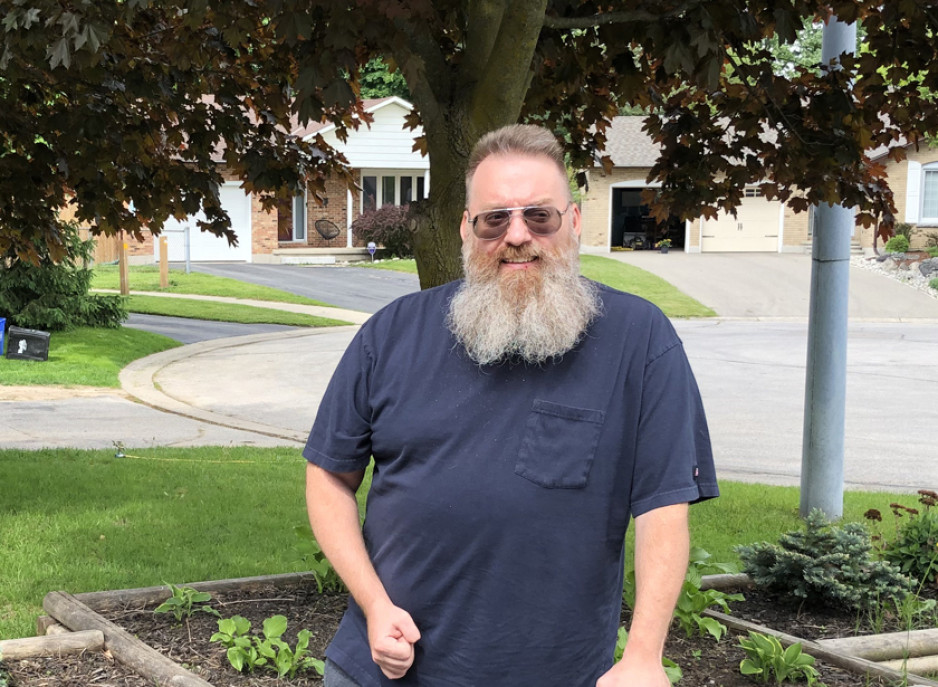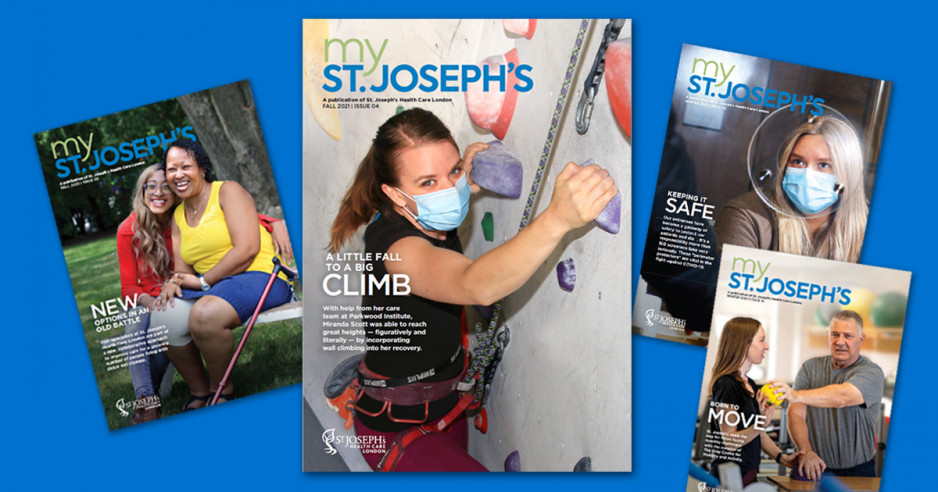Fast and Slow - The Speeds of a Stroke Journey
It was the middle of the night in January 2022 when Michael woke up with a strange feeling. After tossing and turning, unable to get comfortable, Michael’s wife woke to ask if he was OK.
“When I replied, she noticed I was slurring my words,” Michael recalls. “Then she quickly asked me to squeeze her hands with mine and when I couldn’t, she called 911.”
Michael was having a stroke and his wife’s quick action and knowledge most likely saved his life.
Paramedics rushed Michael to hospital where he was diagnosed with a stroke caused by a blood clot in his brain. After two surgeries – one to remove the clot and place a stint and a second to repair internal bleeding – Michael began the long road to recovery, which would include a transfer to St. Joseph’s Health Care London for specialized rehabilitation after his initial treatment.
“The first four hours after a stroke are crucial,” explains Dr. Ricardo Viana, a physiatrist at St. Joseph’s Parkwood Institute. “In that timeframe a patient can receive lifesaving care that reduces the severity of damage a stroke can cause to the brain.”
Minimizing the damage also means a better chance at recovery through rehabilitation.
Blood clots are the most common cause of strokes and treatment includes a special type of drugs called thrombolytic medicines that work to break up or dissolve clots in the body. But administering drugs within that four-hour time frame is critical.
Dr. Viana encourages everyone to know the FAST signs of stroke, which stands for Facial drooping, Arm weakness, Speech difficulties and Time to call emergency services.
“Don’t drive to the hospital, he urges. “Call 911 right away.”
Slow and steady on the road to recovery
While the stroke paralyzed the left side of his body, Michael quickly regained his ability to walk with the help of the inpatient rehabilitation team in the Stroke/Neurological Rehabilitation Program at Parkwood Institute.
“I had intensive physio two to three hours a day. The team provided amazing support, especially the physiotherapists, who kept me motivated, focused and helped build my confidence to keep going.”
Recovery has been slower than Michael would like, but he’s determined to keep pushing forward.
“I want to get back to who I used to be. I’ve learned the harder I work at therapy, the faster I meet my goals.”
One step at a time
On April 22, 2020, Roger Oatman awoke not feeling well. His last clear memory is picking up the phone and falling to the floor. The next thing he remembers is overhearing his wife on the phone and knowing something was wrong.
“The ambulance drivers wheeled me out the door, then… I can’t remember the next three weeks.”
Roger’s stroke affected his right arm and leg and he struggles to get words out due to Broca’s aphasia, an acquired language disorder caused by injury to the speech and language areas of the brain.
After a hospital stay, Roger was connected with Parkwood Institute’s Community Stroke Rehabilitation Team, a specialized program that provides rehabilitation for stroke survivors at home or in the community. The team, in partnership with other community care providers, helped Roger return to living life fully. His advice to other stroke survivors is not to compare their progress to others.
“Just get up, every day. Remember, even one or two steps is an accomplishment. Don’t give up. It will get better.”
St. Joseph’s Community Stroke Rehabilitation Team includes health care providers from various specialties such as physiotherapy, occupational therapy, social work, nursing, speech language pathology and therapeutic recreation who work together with community programs to ensure stroke patients have access to the support they need.



